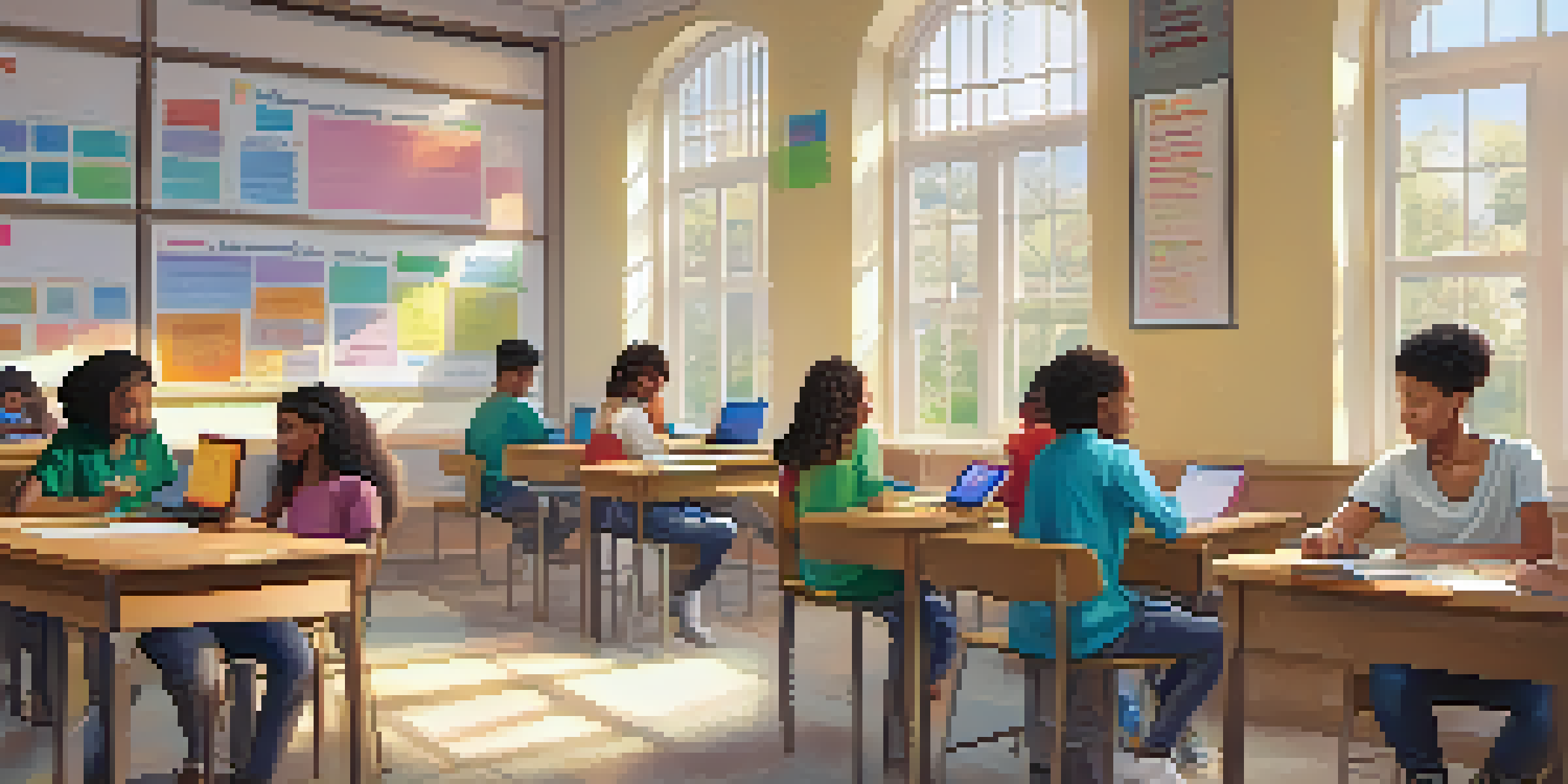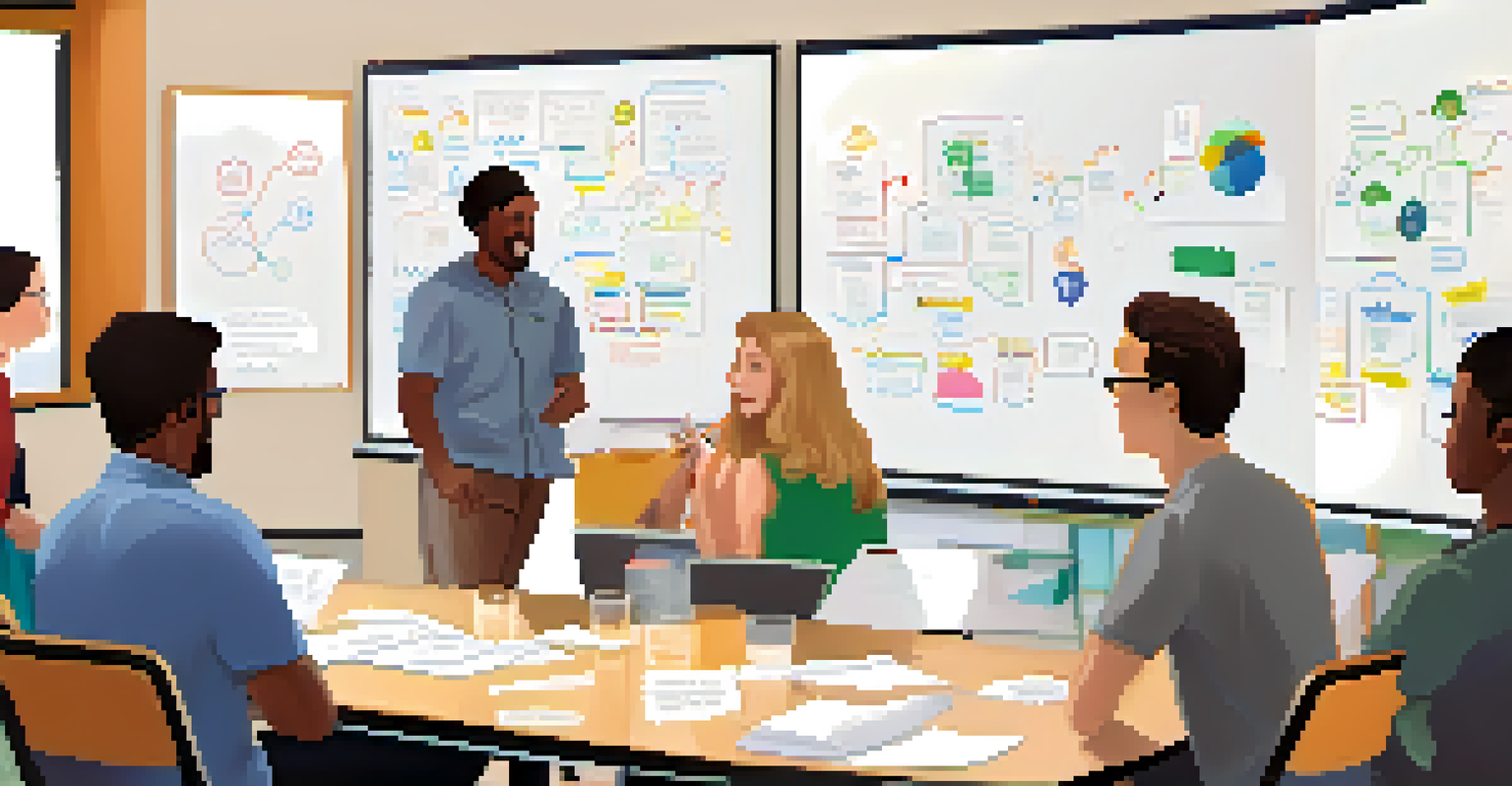Personalized Learning Paths in CPD for Educators' Growth

Understanding Personalized Learning Paths in CPD
Personalized learning paths in Continuous Professional Development (CPD) are tailored experiences designed to meet the unique needs of educators. Rather than adopting a one-size-fits-all approach, these paths allow teachers to select courses and resources that align with their professional goals. This customization not only enhances engagement but also fosters a deeper understanding of the content.
Personalized learning allows educators to take control of their professional development, fostering a culture of lifelong learning.
For instance, an educator focusing on technology integration can pursue specific training in educational software, while another might explore classroom management techniques. This targeted approach ensures that every learning opportunity is relevant and applicable to their daily teaching practice. In essence, personalized learning paths respect the individuality of each educator's journey.
Moreover, this method encourages self-directed learning, empowering teachers to take charge of their professional growth. By allowing educators to choose their learning trajectory, it nurtures a culture of lifelong learning—an essential component in today’s ever-evolving educational landscape.
Benefits of Personalized Learning Paths for Educators
The benefits of personalized learning paths extend far beyond individual satisfaction; they contribute to improved teaching outcomes. Educators who engage in tailored professional development often report increased confidence and competence in their subject areas. This boost in self-efficacy can lead to more innovative teaching methods and higher student engagement.

Additionally, personalized learning paths can significantly reduce the feeling of burnout among educators. When teachers have the autonomy to choose what they learn, they feel more invested in their professional journey. This sense of ownership can rejuvenate their passion for teaching, making them more effective in the classroom.
Personalized Paths Boost Engagement
Tailored learning paths cater to educators' unique needs, enhancing engagement and relevance in professional development.
Furthermore, these tailored paths can lead to better collaboration among educators. When teachers pursue similar areas of interest, they have the opportunity to share insights and strategies, fostering a supportive community that thrives on shared knowledge and experiences.
Creating Effective Personalized Learning Paths
To create effective personalized learning paths, it’s essential to start with a clear understanding of each educator's goals and needs. Conducting assessments, such as surveys or interviews, can help identify specific areas for growth. This foundational step ensures that the learning path is relevant and aligned with the educator's aspirations.
The best teachers are those who continuously learn and adapt, creating tailored paths that meet the unique needs of their students.
Once these needs are identified, educators can explore various resources, such as online courses, workshops, and peer mentoring. It's crucial to curate a diverse range of options that accommodate different learning styles and preferences. For instance, some educators might prefer interactive video sessions, while others thrive in collaborative group settings.
Additionally, regular check-ins and feedback loops can enhance the effectiveness of these paths. By periodically assessing progress and adjusting the learning plan as needed, educators can stay on track and remain motivated. This dynamic approach not only keeps their learning relevant but also fosters a sense of accomplishment.
Incorporating Technology in Personalized Learning Paths
Technology plays a pivotal role in the success of personalized learning paths for educators. With the wealth of online resources available, teachers can access training modules, webinars, and professional communities at their convenience. This flexibility allows for a more tailored approach, as educators can learn at their own pace and on their own schedule.
For example, learning management systems (LMS) can facilitate personalized learning by providing customized course recommendations based on an educator's past training and interests. This automation not only saves time but also enhances the relevance of the learning experience. Additionally, educators can engage with interactive tools that promote active learning and collaboration.
Autonomy Reduces Teacher Burnout
Allowing educators to choose their learning journeys fosters a sense of ownership, which can help alleviate feelings of burnout.
Moreover, technology enables educators to track their progress and reflect on their learning journey. Many platforms offer analytics that highlight completed courses, skills acquired, and areas needing improvement. This data-driven approach empowers educators to make informed decisions about their professional development.
The Role of Feedback in Personalized Learning Paths
Feedback is a cornerstone of successful personalized learning paths. Regular, constructive feedback helps educators gauge their understanding and application of new skills. This ongoing dialogue not only reinforces learning but also provides opportunities for continuous improvement, ensuring that the educational experience remains dynamic and effective.
Incorporating peer feedback can also enhance this process. When educators share their experiences and insights with colleagues, they create a collaborative learning environment that benefits everyone involved. This exchange of ideas can lead to innovative practices and a more comprehensive understanding of various teaching strategies.
Additionally, educators should seek feedback from their students regarding instructional methods and engagement strategies. This student-centered approach further refines personalized learning paths, as it allows educators to adjust their practices based on real-time reactions and outcomes, ultimately leading to better teaching and learning experiences.
Challenges of Implementing Personalized Learning Paths
While personalized learning paths offer numerous advantages, they also present certain challenges. One significant hurdle is the potential for educators to feel overwhelmed by the plethora of choices available. Without proper guidance, educators may struggle to select the most relevant resources, leading to frustration instead of growth.
Moreover, time constraints can hinder the effective implementation of personalized learning paths. Educators often juggle multiple responsibilities, making it challenging to dedicate adequate time to professional development. It's essential for schools and districts to create supportive structures that prioritize ongoing learning.
Technology Enhances Learning Flexibility
Utilizing technology in personalized learning paths provides educators with flexible options and the ability to track their progress effectively.
Additionally, there may be resistance to change from some educators who are accustomed to traditional training models. To address this, it's important to communicate the benefits of personalized learning paths clearly and provide adequate support during the transition. Building a culture that values professional growth can alleviate these concerns and encourage widespread adoption.
The Future of Personalized Learning Paths in CPD
The future of personalized learning paths in CPD for educators looks promising, with advancements in technology paving the way for even more tailored experiences. As artificial intelligence and data analytics continue to evolve, these tools will enable educators to receive more precise recommendations and resources tailored to their specific needs. This level of personalization will further enhance the effectiveness of professional development.
Moreover, the growing emphasis on mindfulness and mental well-being in education will likely influence the design of personalized learning paths. Educators will not only seek to enhance their skills but also focus on maintaining a healthy work-life balance. This holistic approach to professional development can lead to more sustainable growth and satisfaction.

Ultimately, the continued evolution of personalized learning paths will foster a culture of lifelong learning among educators. As they embrace the notion of continuous improvement, teachers will be better equipped to adapt to the changing educational landscape, ensuring that they provide the best possible learning experiences for their students.